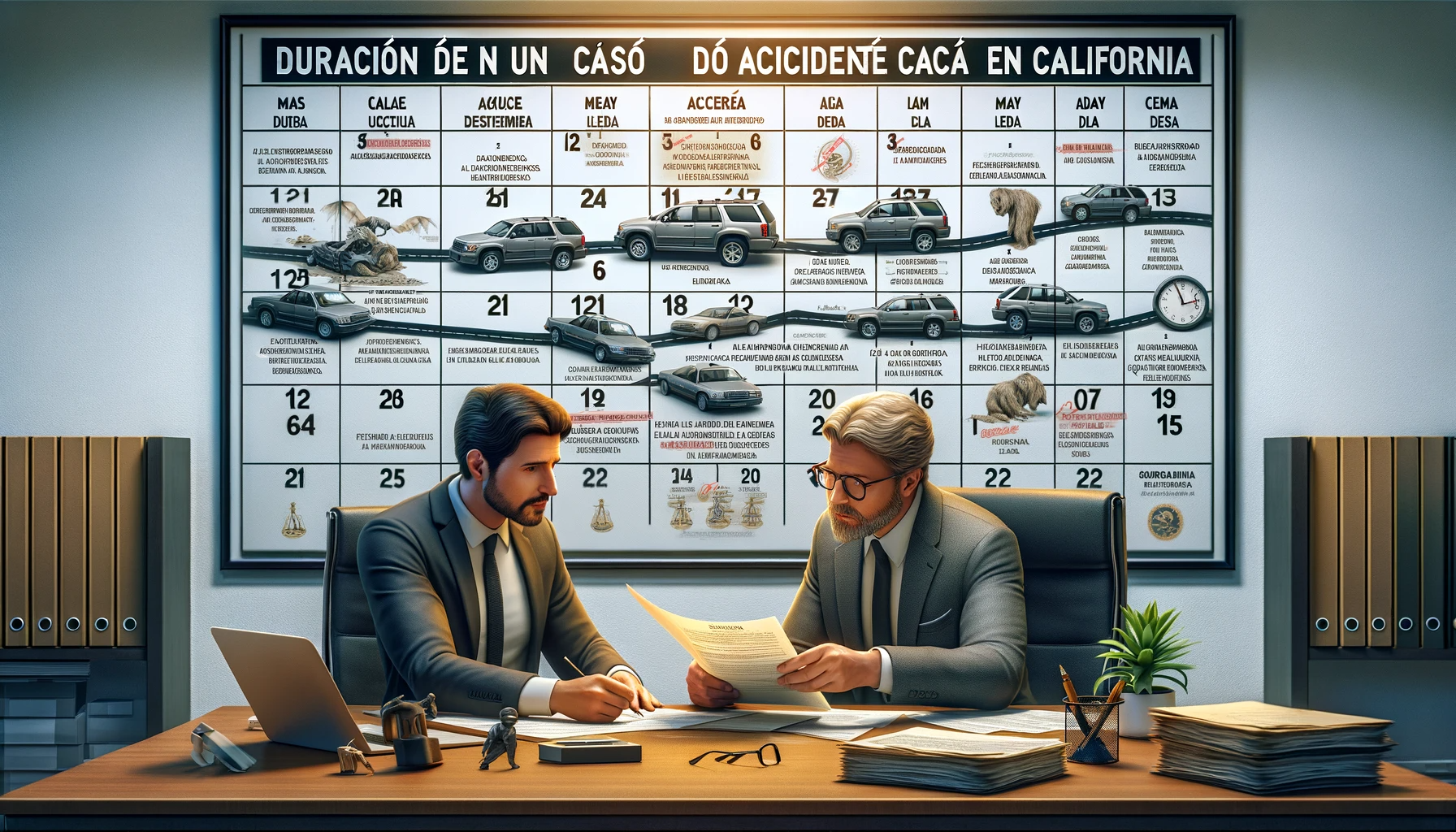Understanding Insurance Coverage
Grasping the Concept of Insurance Coverage
Insurance coverage refers to the amount of risk or liability that is covered for an individual or entity via insurance services. Essentially, it's a contract, also called a policy, in which an individual or entity receives financial protection or reimbursement against any losses from an insurance company. The company's coverage depends on what type of insurance policy you've obtained and what property or risk is covered under the policy.
The Basics of Insurance Policies
An insurance policy is a legally binding contract issued by the insurance company to the policyholder. This contract outlines the specific types of risks covered, the extent of the coverage, and the terms under which the insurance payouts occur. Common types of insurance include auto, health, home, and life. Each type provides different coverages and may cover different incidents or scenarios.
Understanding Policy Limits
Every insurance policy has limits, meaning there is a maximum amount the insurance company will pay for a specific loss or damage. For example, if a car insurance policy has a coverage limit of $20,000 for property damage, and if an insured vehicle causes damage exceeding this limit, then the policyholder is responsible for the cost difference. Knowing your policy limits and understanding their implications is crucial in being well-protected.
Comprehending Deductibles
A deductible is the amount of money that the policyholder must pay out-of-pocket before the insurance coverage kicks in. For instance, if your home insurance policy has a $1,000 deductible, you'll need to pay the first $1,000 of the covered losses yourself. After that, the insurance company would start paying for losses up to the policy limit. Deductibles can significantly influence the cost of the premiums and should be thoroughly considered when choosing a plan.
Identifying Exclusions in the Insurance Policy
Exclusions are situations where your policy will not provide coverage. These can vary greatly depending on the type of insurance and the individual policy itself. For example, many home insurance policies exclude damage caused by floods or earthquakes as these require separate policies. Similarly, your car insurance may not cover damages done when you use your personal vehicle for commercial purposes. It's vital to read and understand your policy exclusions to avoid any future confusion or surprises.
Types of Insurance Policies and Their Coverage
Health Insurance Policies
Health insurance policies generally provide financial protection for medical expenses incurred due to illness or injuries. They typically cover costs such as hospitalization, prescription medications, and doctor consultations. Some plans also include services like preventive care, maternity and new-born care, mental health services, and substance use disorder services.
Auto Insurance Policies
Auto insurance is designed to cover risks associated with owning and operating a vehicle. This policy usually covers both
Personal injury and property damage. The four primary types are liability coverage, collision coverage, comprehensive coverage, and uninsured/underinsured motorist coverage. Liability pays for damages you cause, collision handles damages to your car from a crash, comprehensive covers non-collision-related damages like theft or vandalism, and uninsured/underinsured motorist coverage kicks in when the other party in an
Accident cannot cover the costs.
Homeowner's Insurance Policies
Homeowner's insurance provides coverage for damage to your home, personal property, and additional living expenses if you have to live somewhere else temporarily because your home is uninhabitable. It also includes liability coverage against
Accidents in the home or on the property. There can be various forms of homeowners insurance, covering different types of risks - from fire and smoke to theft and vandalism.
Life Insurance Policies
Life insurance provides financial support to designated beneficiaries upon the death of the policyholder. There are two main types: term life and permanent life insurance. Term life provides coverage for a specific period, while permanent life insurance provides lifelong coverage and has a cash-value component.
Business Insurance Policies
Designed to protect businesses from potential losses, business insurance policies come in various forms, depending on company needs and industry risks. They may cover property damage, legal liability, employee-related risks, and lost income due to business interruption. Some common types of business insurance include general liability, workers' compensation, professional liability, and commercial property insurance.
Significance of Knowing Your Insurance Cover

Understanding the Coverage Limits
Knowing your insurance cover gives you a clear perception of the coverage limits. This is important as it guides you on the maximum amount the insurer is obligated to pay in case of a covered loss. It helps you avoid unnecessary out-of-pocket expenses. With this knowledge, you are able to decide if you need to adjust your cover to have more comprehensive protection.
The Importance of Policy Exclusions
Awareness of your insurance cover also means understanding what is not covered or the policy exclusions. This information is crucial for ensuring that you're not caught off guard when an unfortunate event strikes. It allows you to explore additional policies or riders to seal potential coverage gaps.
Deductible Details
By knowing your insurance cover, you become aware of your deductible details - which is the amount you need to pay before the insurer begins to cover any losses. Understanding your deductible can influence how you manage potential risks. For instance, knowing you have a high deductible might deter you from filing a claim for minor damages.
Decoding Conditional Clauses
Insurance policies can have conditional clauses that determine when and how claims can be made. Awareness of these conditions is vital to ensure valid claims. It further prevents situations where insurance benefits may be denied due to breach of these conditions.
Facilitating Prompt Claims
Finally, being knowledgeable about your insurance cover expedites the claims process, as you're well-versed with the necessary documentation and procedures. This facilitates quick compensation and reduces a lot of stress associated with claim applications.
In essence, the significance of knowing your insurance cover goes beyond just paying premiums; it ensures that you're adequately protected, financially prepared, and equipped to navigate the claims process seamlessly.
Homeowner's Insurance: What Hits Does it Cover?
Homeowner's insurance is an essential component of responsible property ownership. It cushions homeowners from potential financial blow following certain unplanned events or "hits." We will discuss some of these hits that homeowner's insurance typically covers.
Physical Damage to the Home
One of the main hits that homeowners insurance covers is physical damage to the home. This usually includes damage caused by incidents such as fires, storms, hail, and other natural disasters. Some policies may also cover the cost of repairing or replacing structures attached to the house such as a garage or deck. It is important to note, though, that not all types of damage (e.g., from floods or earthquakes) are included in standard policies, and additional coverage may be needed.
Theft and Vandalism
Homeowner's insurance usually covers theft and vandalism. If someone breaks into your home and steals your belongings, the loss will typically be covered after you pay your deductible. Similarly, if your property is vandalized, your policy can help cover repair costs. However, it's crucial to report such incidents to the police promptly and keep a record of what was stolen or damaged for accurate claim handling.
Liability Protection
Liability protection is another major aspect of homeowner’s insurance. This safeguards you in case someone is injured on your property and decides to sue. Coverage might include medical bills, court costs, and legal fees. Additionally, if you or your family members accidentally damage someone else's property, your homeowner's insurance could provide liability coverage.
Additional Living Expenses
If a covered disaster makes your house uninhabitable, homeowner's insurance can cover your living expenses while your home is being repaired. This is often referred to as 'loss of use' and can include temporary accommodation costs like hotel bills, meals, and other incidentals that are above and beyond your normal living expenses.
Remember, it's important to fully understand what your specific policy covers and does not cover. Always ask your insurance agent any questions you have regarding your coverage.
Auto Insurance: What Accidents are Covered?
Understanding Collision Coverage
Collision coverage is one type of auto insurance that helps pay repair costs if your car is damaged in an
Accident with another vehicle or a stationary object like a tree or fence. Whether you're at fault or not, collision insurance covers incidents such as hitting another car or backing into a pole in a parking lot.
Taking a Look at Comprehensive Coverage
Comprehensive coverage comes into play for damages caused by incidents other than a collision. These could include natural disasters like earthquakes or floods, damage from vandalism, theft of your car, or damage caused by falling objects. It's worth noting that typically, comprehensive insurance will cover you up to the actual cash value of your car.
Uninsured/Underinsured Motorist Cover
Unfortunately, not all drivers on the road have sufficient insurance coverage. Uninsured/Underinsured Motorist coverage provides protection if you're in an
Accident with a motorist who is either not insured at all or has inadequate insurance. In such cases, this type of insurance can cover medical expenses and car repair costs.
Personal Injury Protection, often known as PIP insurance, covers medical expenses for you and your passengers regardless of who is at fault in the
Accident. Some policies may also cover lost wages and other related expenses depending on the terms of the policy.
Bodily Injury and Property Damage Liability
Liability coverage is essential, and in many places, it's a legal requirement. This type of insurance covers the costs associated with injuries to other people or damage to others' property when you're at fault in an
Accident. These costs may include medical bills, legal fees, and repair costs for the other party's damaged vehicle or property.
Health Insurance: Understanding What is Included
Core Elements of Health Insurance
To start with, it's crucial to comprehend the basic components typically included in a health insurance policy. Key elements fall into categories such as preventive care, emergency services, hospitalization, and prescription drugs. Preventive and wellness checks include regular appointments and health screenings. The emergency service coverage takes care of sudden health issues demanding immediate attention. Hospitalization covers costs for procedures, surgeries, and overnight stays. Lastly, most health insurance plans cover the cost of prescription drugs.
Specific Providers and Out-of-Network Care
Next, understanding your plan’s network is a significant aspect of health insurance. Insurance companies contract with a range of doctors, hospitals, pharmacies, and healthcare providers to supply care for members at reduced costs. These are 'in-network' providers. If you choose to go to a doctor or facility that isn't in your network, your insurance may not cover the care, or it may be covered at a lower level, resulting in higher out-of-pocket costs.
Types of Health Insurance Coverage
There are different types of health insurance coverage that you should know. Preferred Provider Organizations (PPOs) allow you to visit any healthcare professional without a referral, both inside and outside your network. Health Maintenance Organizations (HMOs) only cover care provided by doctors who work for or contract with the HMO. Point of Service Plan (POS) and High-Deductible Health Plan (HDHP) are some other types of health insurance coverage.
Costs Associated with Health Insurance
An important part of understanding health insurance is acknowledging the costs involved. You typically pay a monthly premium, whether you use medical services or not. Also, you may have to meet a yearly deductible before your insurance company starts to cover a larger portion of your bills. Besides these, copayments and coinsurance are two types of cost-sharing where you pay a portion of the healthcare service.
Limitations and Exclusions
Finally, it's important to know that a health insurance policy can include limitations and exclusions. This means certain services may not be covered, or there might be caps on what the plan will pay. Some services might require preapproval, also known as prior authorization, from your insurance carrier before happening, or else they won't be covered. Reading the policy carefully should give you an understanding of these areas.
The Role of Deductibles in Insurance Coverage
Understanding the Concept of Deductibles
A deductible in insurance is an amount that the policyholder is responsible to pay out-of-pocket before the insurer covers a loss. This amount can be significant and is usually set when you first buy your insurance policy. The deductible serves as a form of risk-sharing between the insured person and the insurance company.
The Mechanism of Deductibles
When a claim is made, the insured pays their required deductible, after which the insurance company takes care of the remaining payment up to the policy limit. Importantly, the deductible applies per incident rather than annually. In other words, each time a new claim is filed, you will be responsible for meeting the deductible amount.
Influence of Deductibles on Premiums
Deductibles are directly linked to insurance premiums. Typically, the higher your deductible, the lower your premium will be. This is due to the fact that by picking a higher deductible, the policyholder is agreeing to shoulder a larger portion of the risk, which in turn reduces the insurer's financial obligation. This trade-off allows the policyholder to potentially save money on premiums, but could lead to higher out-of-pocket costs in the event of a claim.

Choosing the Right Deductible
The deductible selection needs thoughtful consideration. Choosing a very high deductible may lower your insurance premiums, but it also means higher out-of-pocket expenses in case of an incident. Conversely, a low deductible would result in higher premiums, but lesser spending at the time of a claim.
Impact of Deductibles on Different Types of Insurance
The role of deductibles can vary based on the type of insurance. For instance, health insurance often features annual deductibles, whereas auto or homeowners insurance typically requires a deductible per incident. Understanding these differences and how they align with your financial situation and risk tolerance is an essential part of managing your insurance coverage.
Conclusion
Understanding your insurance coverage is not just about reading the fine print; it's about knowing how to respond when life happens. Make sure you're familiar with your policy's terms and conditions, so you can rest easy knowing you're covered.
Look for an attorney who has the right legal resources for your legal needs.
Contact us here on the
Warmuth Law website or through our hotline 888-517-9888.
Frequently Asked Questions (FAQ's)
1. What exactly does liability coverage entail?
Liability coverage is like your financial guardian angel. It steps in when you're legally responsible for someone else's losses. Whether it's property damage or personal injuries, this coverage has your back, ensuring you don't have to pay all those expenses yourself.
Now, liability coverage isn't a one-size-fits-all kind of deal. It's tailored to the specifics of your policy, so it's important to know what your particular policy covers. It's the difference between a good night's sleep and a financial nightmare.
2. How do deductibles influence my out-of-pocket costs?
Deductibles are like the entry fee to the insurance party. They're what you pay before your insurance says, "Alright, I'll take it from here." A higher deductible usually means lower premiums, but it also means shelling out more cash during a claim.
On the flip side, a lower deductible can mean less financial stress when you file a claim, but your monthly premiums will be higher. It's all about finding that sweet spot that works for your wallet.
3. Can you explain what comprehensive coverage includes?
Comprehensive coverage is the Swiss Army knife of car insurance. It's there for the unexpected, the out-of-the-blue, the "I can't believe that just happened" moments. We're talking theft, vandalism, natural disasters, and even hitting a deer on a moonlit drive.
But remember, even comprehensive coverage has its limits. It won't cover everything, so make sure you know what's included and what's not. It's the key to avoiding unpleasant surprises.
4. What are some common policy exclusions I should be aware of?
Policy exclusions are like the fine print on a flashy advertisement. They're the things your insurance won't cover. Common exclusions can include intentional damage (no, you can't smash your own car window and claim it), normal wear and tear, and acts of war.
Knowing these exclusions is crucial because it helps you understand the true scope of your coverage. It's the difference between being prepared and being caught off guard.
5. How do I determine if an incident is covered under my policy?
Determining if an incident is covered is like being a detective. You've got to gather the facts, know your policy, and sometimes, get in touch with your insurance provider for the nitty-gritty details.
It's all about understanding the covered perils and exclusions in your policy. So, grab a magnifying glass (figuratively, of course) and start investigating your policy's terms. It's the best way to know for sure what's covered.













